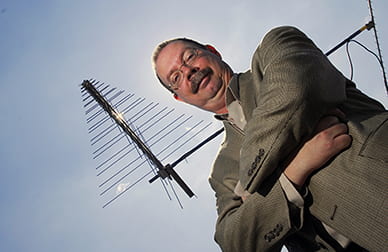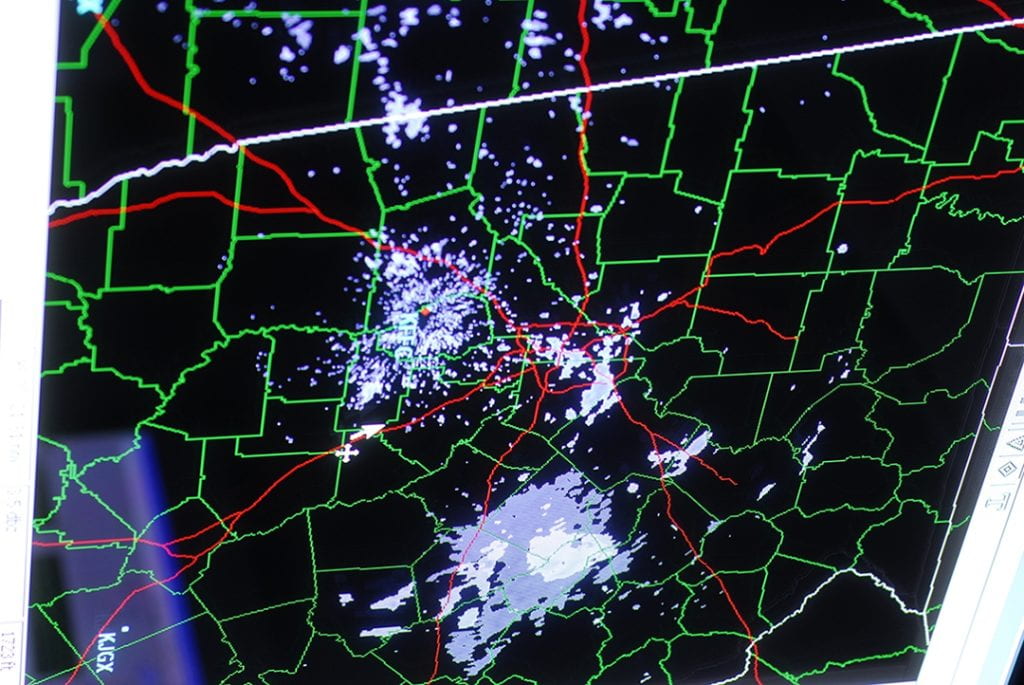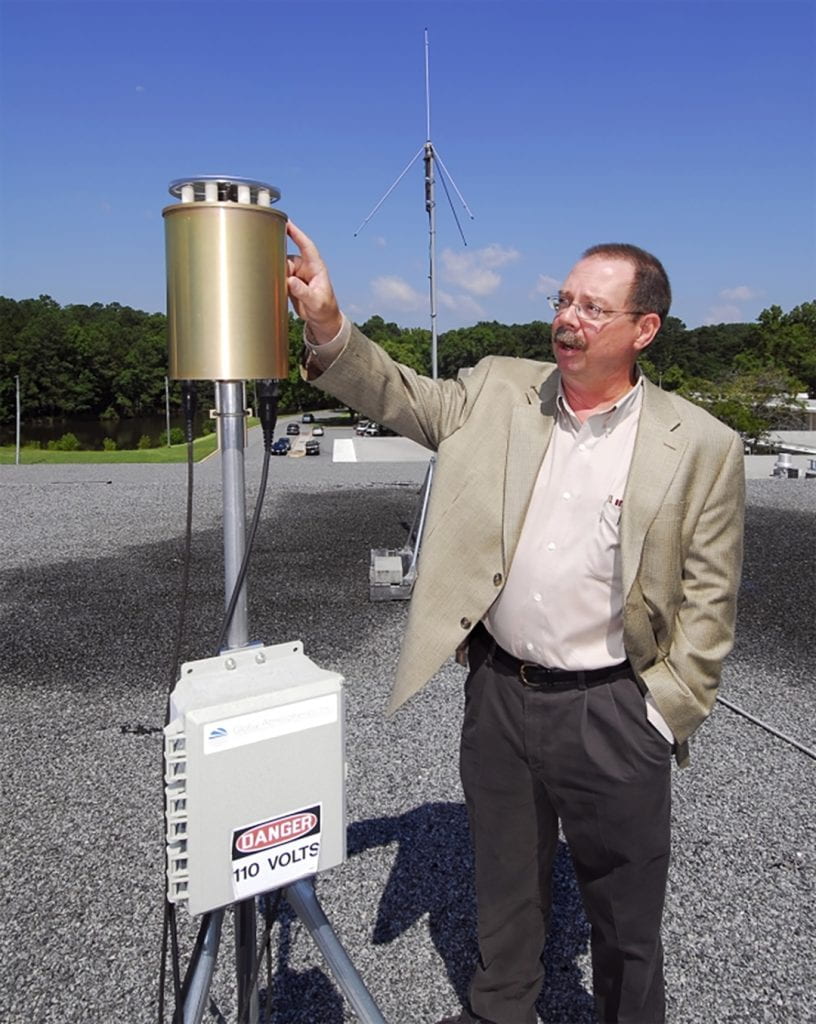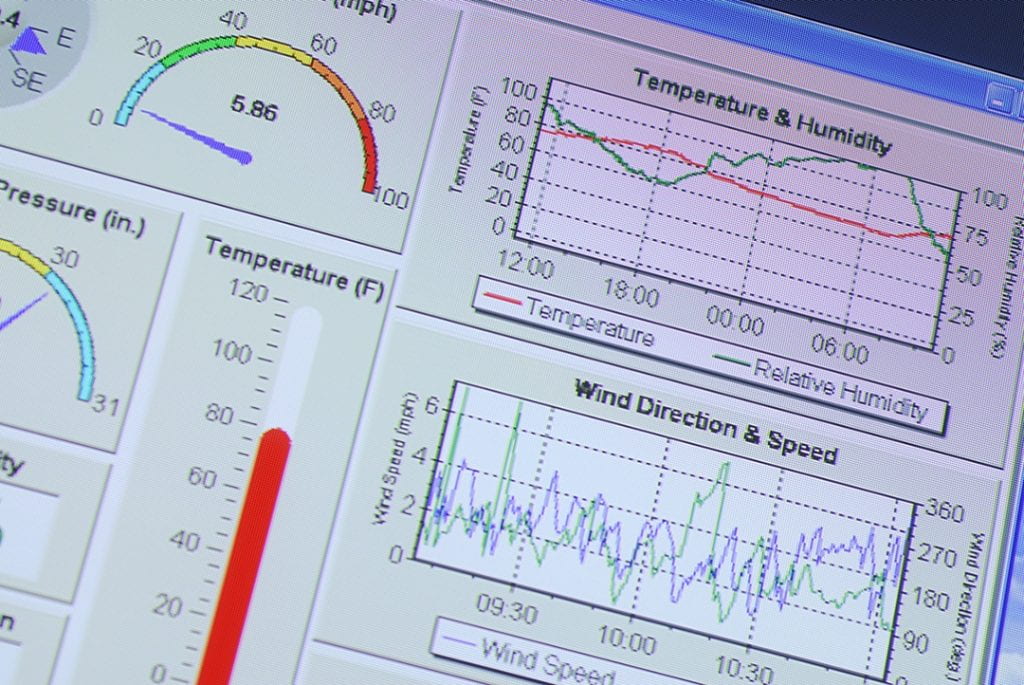SSRC Seeks to Increase Georgia’s Defenses Against Twisters
The tornado that ripped through downtown Atlanta on March 14, 2008, produced a death, psychological shock and some $150 million in damage. Yet it was hardly an isolated event.
Georgia ranks high among tornado-plagued areas of the United States. It was 18th among the most affected states between 1953 and 2004. And in 2007, Georgia experienced 42 twisters; only seven states suffered more hits.
Helping to protect Georgia residents against such violent weather is the job of the researchers of the Severe Storms Research Center (SSRC) at the Georgia Tech Research Institute (GTRI). One of their tasks: to explore and develop new technologies able to improve both the accuracy and the timeliness of tornado warnings.
Currently, NEXRAD Doppler radar technology is state-of-the-art in the U.S., which is ravaged by more tornadoes than anyplace else on Earth. NEXRAD offers about a 15-minute average advance warning that a tornado may hit.
“That’s a big improvement over the old days, when a funnel cloud on the horizon was often the first warning,” says John Trostel, director of the SSRC. “Before NEXRAD was established in the 1990s, you would have been lucky to have gotten a 30-second warning.”
The GTRI center was founded after a tornado struck Gainesville, Ga., with no warning in March 1998, leaving 11 people dead in Hall County, recalls SSRC Director Gene Greneker. A task force formed by then-Georgia Gov. Zell Miller recommended a severe-storms center with several missions, including conducting cutting-edge research, collecting and archiving storm data and improving detection and warning. The center was initially funded through the Federal Emergency Management Agency (FEMA), and on-going support has come through the state of Georgia with the continuing involvement of the Georgia Emergency Management Agency (GEMA).
“Part of our goal is to explore what’s different about the severe storms of north Georgia,” Greneker says. “Tornadoes in Georgia are often short-lived events that take place over a few minutes, while those in Kansas or Oklahoma may last for an hour.”
NEXRAD continues to be the first line of tornado defense, Greneker explains. Earlier weather radars dating back to the 1950s could sometimes reveal the classic “hook” echo on some tornadoes, but NEXRAD is far more effective.
Today’s national network of NEXRAD stations uses three-dimensional Doppler technology to detect wind direction and other factors; the information shows up on-screen in brightly colored cells that resemble the pixels of a heavily magnified digital photo. When winds in a given area begin to twist in opposite directions – a tornadic phenomenon called wind shear – two cells form a distinctive on-screen “couplet” that alerts weather watchers a tornado may be forming.
SSRC uses several tools to amass and study NEXRAD data, including GR2Analyst software, developed in Georgia, and a WDSS-II analysis station.
“I’m seeing very interesting trends in the number of tornadoes that occur annually in Georgia,” Trostel says. “There was an average of about 15 to 25 events from 1950 through 1970, then a peak in the early 1970s to over 40 events, and then a return to 15 to 25. But since 2000, the trend in the number of annual events appears to be again increasing.”
New Insights into Tornadoes
NEXRAD is an important tool, Trostel acknowledges. Yet to increase the weather watcher’s arsenal, and potentially improve warning times and accuracy, GTRI researchers are developing additional approaches to tornado detection and monitoring.
Currently, SSRC studies North Georgia weather using 12 research systems that use a wide variety of instruments, sensors, computers and software, with two more systems under development. Researchers involved in the effort include Greneker, Trostel, Ed Reedy, Tom Perry and Jenny Matthews, as well as a number of students.
Among the SSRC’s top areas of study is the complex role that lightning and acoustics play in North Georgia’s severe storms and in the formation of tornadoes.
Lightning – Researchers based at GTRI’s Cobb County Research Facility are pursuing several approaches that could potentially correlate lightning’s behavior with tornado activity:
- Lightning mapping arrays use multiple receiving stations to monitor severe storms as they move through an area. The SSRC and other Atlanta-area weather stations – such as the National Weather Service at Peachtree City – are developing a six-station array that will augment data already coming from an existing array in northern Alabama;
- Electric field mills measure the enormous changes in electric fields between fair weather and severe storms, providing important data that can even correlate raindrop size and frequency with other storm parameters;
- A lighting polarization ratio station monitors the horizontally and vertically polarized radio-frequency signals created by lightning strokes, providing data on the behavior of cloud-to-cloud and cloud-to-ground lightning. Greater understanding of lightning, especially the less-understood cloud-to-cloud variety, could shed light on tornado formation;
- Gamma-ray detectors record the gamma- and X-rays that emanate from lightning strokes, and offer the potential to correlate the appearance of these powerful phenomena with tornado activity.
Acoustic signals – Severe storms emit very low-frequency sounds — in the range of 50 hertz and below, which is analogous to the sonic footprint of an earthquake. Tornado vortices appear to emit these “infra-sounds” in frequencies ranging from 1 hertz down to tenths of a hertz. At the Cobb Country Research Facility, GTRI researchers are building an array of low-frequency sensors that may allow them to identify sonic signatures unique to tornadoes.
Trostel notes that there are myriad ways to study severe storms, many of them surprisingly cost-efficient. He points to a field mill developed by a local high-school student; constructed from such materials as a coffee can, it can detect electrical fields associated with storms.
“This device does a very good job, and it cost $87,” Trostel says. “We want to get Georgia high-school science classes to construct and deploy these detectors – and then we could track storm-related electrical fields as they progress across the state.”



